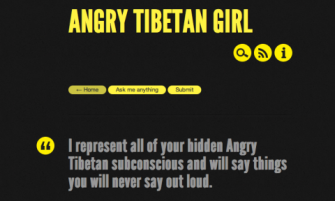
Today is the lunar new year known as Losar in Tibetan or Tsagaan Sar in Mongolian. Though often called “Tibetan New Year,” this holiday is celebrated by a number of different peoples with strong common historical ties. It is my privilege to interview Dolma, a Sherpa Buddhist, about what this holiday means to her.
Who are you?
A community-organising Sherpa Buddhist who loves tea and plants.
What’s the Buddhist significance of this holiday?
Losar is the Sherpa and Tibetan Buddhist New Year, and it’s one of the most important holidays of the year. We follow a Lunar calendar, and so like many other communities, this is the year of the Dragon. During Losar we aim to begin the New Year with a fresh start, which is represented through purification pujas and other traditions like cleaning your entire house and wearing new clothes.
What does this holiday mean to you?
For me personally, Losar is about family and community, and I enjoy the tradition and joy we share with each other during this time. I guess I have a migrant’s nostalgia about Losar too now that I don’t live in Nepal anymore. It makes me think about my mother’s stories about celebrating Losar in Solukhumbu, and how my cousins and I would pick out the candy and dried apricots out of bowls of khapsay(a sweet fried dough that we make for Losar) at relatives’ houses. I think about how we would throw tsampa (roasted barley flour) around at the Gompa, and in particular, the elderly Sherpa and Tibetan women who would run around and laugh as they threw tsampa at each other! I do look forward to the traditions that I still take part in here in the U.S. too, such as time with family and cooking particular dishes. And so Losar is a time for me to reflect on the past year, the one to come, and to share in this festivity with my loved ones.
What do you plan to do for Losar?
My family is very spread out now, which makes visiting each other during Losar difficult, and there’s no Sherpa Gompa where I live. But my immediate family is much closer to me now (which is wonderful!) and so I spend Losar with them. We usually do the traditional practices, such as making khapsay and visiting friends in the area. There is usually a Sherpa Losar party as well, but we don’t celebrate Losar when a member of our family passes away, and with the passing of Trulsik Rinpoche, many communal Losar celebrations have been cancelled.
I wish everyone a wonderful New Year – Losar Tashi Delek!
You can read other writing by Dolma on this blog (“How can you be angry? You’re a Buddhist!”). You can also check out other holiday posts (including the other lunar new year) here.
